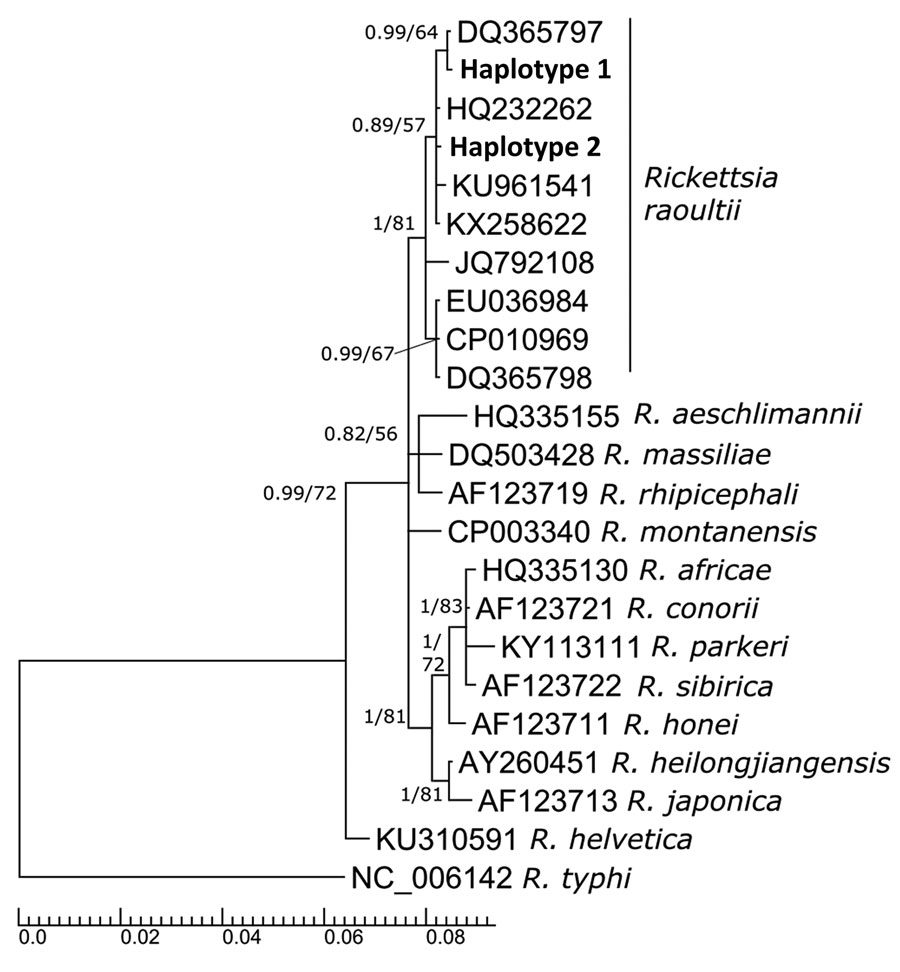Volume 28, Number 4—April 2022
Research Letter
High Prevalence and Low Diversity of Rickettsia in Dermacentor reticulatus Ticks, Central Europe
Figure

Figure. Phylogenetic tree inferred from outer membrane protein ompB region (600 bp) showing 4 separate branches of Rickettsia spp. in ticks. The sequences we obtained (bold) were placed into highly supported subclade corresponding with R. raoultii. First sequence (haplotype 1) shows 100% identity with GenBank accession no. DQ365797 from D. reticulatus ticks from France. Second sequence (haplotype 2) has 100% identity with GenBank accession no. HQ232262 from D. reticulatus ticks from Germany. The numbers at the nodes show posterior probabilities under the Bayesian inference/bootstrap values for maximum likelihood. GenBank accession number are provided for reference sequences. Branch lengths indicate expected numbers of substitutions per nucleotide site.